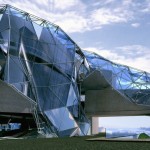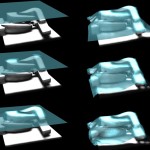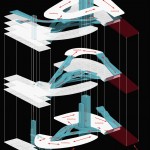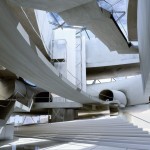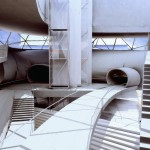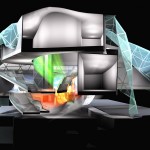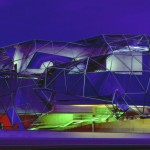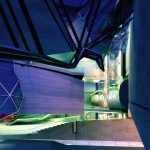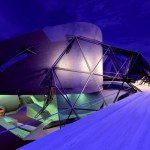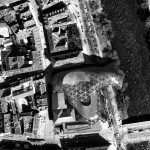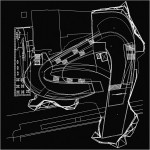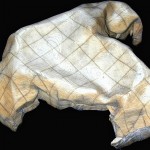cultural spheres / cultural context
why everything becomes a wrapping / a cover / a cloth / fashioning the year 2000 /
representation & high aspirations
Our proposal for Kunsthaus in Graz, Austria can be divided into two essential concepts. The first one expands public urban space on the ground floor level, acting as an attractor for the surrounding squares, lanes and street systems by being accessible and permeable, and thus even the most public sphere (of those strolling around) runs directly into the radius of the Kunsthaus.
The second proposal expands the concept of exhibition room as such by an identity-generating shell whose potentialities are nourished by expanding work/author/spectator-aided concepts of contemporary art production and mediation. Space and interim space both for contemplative and reflexive discussion of contemporary art therefore define two integrative approaches that are enabled and translated through architecture. *The building rising above Lendkai is used for external and internal events. Ostentatiously directed towards the old part of the city, the building serves the perception of active contents and thus significantly stands for active, performative and discursive program.
(intention.contemporary.art.architecture.process).
Our draft starts from social processes which, going beyond institutionalized public mechanisms, are in a position to generate identification and meaning. In this sense, the space reserved for the exhibition of works of art is a fixed local (socio-political) determinant; a transcended physical expression whose demands, claims and wishes
ORGANIZATIONAL PRINCIPLE
can be translated in a simple three-dimensional way. Beyond this consensual context of an exhibition space for art, there is a space which gains importance (and a social sphere) only when actively embedded in the aspects of the programmatic, social and communicative – a process which cannot be curated. Intervention makes possible the experience, use and appropriation of these envisaged spatial qualities.
In the context of Graz we anticipate an active pool in all artistic fields. A situation that we would not sufficiently do justice to with the classical social infrastructures (that naturally serve those on the receiving end). Our concept offers interim zones which represent one of the most crucial resources for the production of art at the present moment and which account for the fact that art production over the last few years has been characterized by de-institutionalized, artistic and social practices. Away from a movement from the center into the periphery. If art production changes, or rather the applied practices of the artists, then this interim zone will be in the position to offer an action radius for intervention. In this way we dissolve function for the benefit of non-determination (new media, education and youth) while knowing precisely about the essential meaning of these areas and their future potential.
(on contemporary art).
*Artistic practice means that art does not end at its limits, but that it is an activity that has an impact on life, and that it is similar to an operation. When we continue to think about art and artistic practice, the international discourse leads us away from the idea of a specialized and autonomous field towards cultural production on the one hand and social practice on the other hand. The new term of cultural production by artists means interdisciplinary analyses of art in a social field, reaching beyond their specific institutions and practices. It is about a space of “artistic practice” or one that mediates this practice in the contemporary sense.
